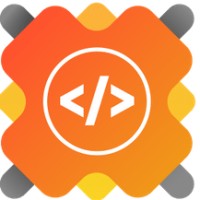Introduction
GSSoC (GirlScript Summer of Code) is an exciting opportunity for aspiring female coders to collaborate on open-source projects and enhance their skills. With the growing demand for diversity in the tech industry, GSSoC provides a platform to showcase your talent and contribute to real-world projects. To increase your chances of getting selected for GSSoC, this guide will provide valuable insights and tips to help you stand out from the competition and make the most of this incredible opportunity.
1. Understand the GSSoC Program:
Before diving into the application process, it's essential to familiarize yourself with the GSSoC program. GSSoC is a global program organized by GirlScript Foundation that encourages women to contribute to open-source projects during the summer break. Visit the official GSSoC website and thoroughly read the program's guidelines, eligibility criteria, project categories, and important dates. Understanding the program's objectives and requirements will help you align your goals and tailor your application accordingly.
2. Strengthen Your Technical Skills:
To excel in GSSoC, it is important to have a strong foundation in programming and related technologies. Identify the programming languages, frameworks, and tools commonly used in the projects offered by GSSoC. Devote time to learning and mastering these technologies through online tutorials, courses, or coding challenges. Building a solid technical skill set will not only improve your chances of selection but also enhance your overall coding abilities.
Start by identifying the core programming languages and technologies that are widely used in the open-source projects you are interested in. This could include languages like Python, JavaScript, or Java, and technologies like Git, HTML/CSS, or popular frameworks like Django or React. Once you have identified the key technologies, focus on strengthening your proficiency in these areas.
There are numerous online resources available, such as coding platforms, tutorials, and documentation, to help you learn and practice these technologies. Engage in hands-on coding exercises and projects to apply your knowledge and gain practical experience. Additionally, consider joining coding communities or forums where you can connect with other developers and seek guidance on specific topics or challenges.
3. Contribute to Open-Source Projects:
Active participation in open-source projects can significantly enhance your chances of getting selected in GSSoC. Open-source projects provide opportunities to collaborate with other developers, contribute to real-world projects, and showcase your skills and dedication. Start by exploring beginner-friendly projects on platforms like GitHub. Look for issues labelled "good first issue" or "help wanted" and contribute to them.
When selecting projects to contribute to, consider the project's alignment with your interests, technical skills, and GSSoC project categories. This will not only make your contributions more meaningful but also demonstrate your passion and commitment to the domain. Actively engage with the open-source community associated with the project, ask questions, seek feedback, and demonstrate your willingness to learn and improve.
Document your contributions and maintain a strong commit history. This will help you demonstrate your active involvement and commitment to open-source projects when filling out the GSSoC application. In your application, highlight your open-source contributions, the impact they had on the projects, and any challenges you overcame during the process.
4. Research and Choose the Right Project:
GSSoC offers a wide range of project categories to choose from. Research the projects that align with your interests and skill set. Analyze their complexity, community support, and project mentors' availability. Select a project that excites you and provides opportunities for growth. During the application process, emphasize your genuine interest and commitment to the chosen project, showcasing your understanding of its objectives. This will demonstrate your passion and dedication to the project and increase your chances of being selected.
When researching projects, consider the following factors:
- Relevance: Choose a project that aligns with your interests and goals. Look for projects that match your technical skills and offer opportunities for learning and growth.
- Complexity: Assess the complexity of the project and your ability to contribute meaningfully. Consider your current skill level and the project's requirements.
- Community Support: Check the project's community engagement and support. Projects with an active community can provide valuable guidance and mentorship during your GSSoC journey.
- Project Mentors: Research the availability and expertise of project mentors. Mentors play a crucial role in guiding you through the project and helping you overcome challenges.
5. Craft a Convincing Application:
Your application is your chance to make a lasting impression on the GSSoC selection committee. Pay attention to the application format and guidelines provided by GSSoC. Clearly highlight your technical skills, past experiences, and contributions to open-source projects. Describe your motivation for joining GSSoC and explain how the program aligns with your career aspirations. Showcase your ability to work in a team, your problem-solving skills, and your communication skills. Ensure your application is error-free, concise, and persuasive.
To craft a compelling application, consider the following tips:
- Highlight Your Technical Skills: Emphasize your proficiency in the programming languages, frameworks, and tools relevant to the projects you are interested in. Provide examples of projects or challenges where you have successfully applied these skills.
- Showcase Your Open-Source Contributions: Mention the open-source projects you have contributed to and highlight the impact of your contributions. Discuss any challenges you faced during your contributions and how you overcame them.
- Demonstrate Your Motivation: Explain why GSSoC is important to you and how it aligns with your long-term goals. Share your passion for open-source development and your eagerness to learn and contribute to the community.
- Highlight Your Soft Skills: GSSoC is not just about technical skills but also about teamwork and communication. Showcase your ability to collaborate, work in a team, and effectively communicate your ideas.
- Customize Your Application: Tailor your application to each project you are applying for. Research the project's objectives, challenges, and requirements, and address them specifically in your application.
6. Showcase Your Portfolio and Projects:
In addition to the application form, provide a well-organized portfolio or GitHub profile showcasing your previous projects, contributions, and achievements. Include links to your relevant repositories, blog posts, or technical articles you have written. A comprehensive and up-to-date portfolio demonstrates your dedication, skills, and commitment to the world of coding. Make sure to highlight any projects that are related to the GSSoC project categories you are interested in. This will demonstrate your expertise in those areas and make your application more impactful.
Ensure that your portfolio showcases a variety of projects that reflect your skills and interests. Include a brief description of each project, the technologies used, your role, and the impact of your contributions. If possible, provide examples of how you applied problem-solving and critical thinking skills to overcome challenges during the project. Remember to keep your portfolio updated with your latest projects and contributions.
7. Networking and Collaboration:
Building connections with fellow developers, mentors, and past GSSoC participants can significantly enhance your chances of selection. Engage in relevant online communities, join coding forums, and participate in webinars or conferences related to your project's domain. Actively seek feedback and guidance from experienced individuals.
Connect with the mentors and participants of the projects you are interested








0 Comments